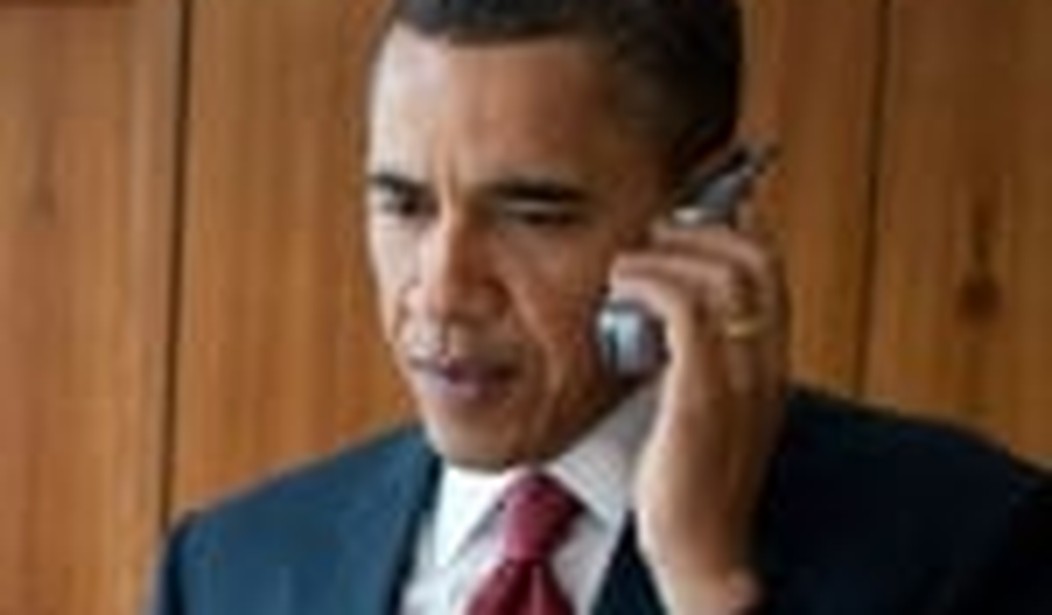On July 15 in Durant, Oklahoma, President Obama announced ConnectHome, describing it as:
… a new initiative with communities, the private sector, and federal government to expand high speed broadband to more families across the country.
ConnectHome is aimed at low-income areas with little broadband uptake, expanding several earlier federal programs. The headlines are about connecting the poor to the modern convenience of the internet, but they don’t mention who’s paying for it. As with most federal programs, you are.
Is ConnectHome worth the costs, and what are they?
So far, the ConnectHome website is thin on details. (It’s even thinner on purchase options; more about that in a moment.) The White House announcement states only that ConnectHome will be grant-funded, to the tune of $150 million. However, there is nothing on how the grants themselves will be funded. I presume that new or redirected HUD grants, rather than FCC-mandated taxes, are a possibility. The announcement says little about how these grants will be administered and spent, other than via EveryoneOn and US Ignite (more about those entities below).
How have existing programs worked? Some digging is required for the answer. Connect America (sort of the larger program including ConnectHome) claims:
Since 2009, the President has been delivering on a comprehensive plan to connect America — from our schools, to our homes, to our businesses. Federal government investments have led to the deployment or upgrading of well over 100,000 miles of network infrastructure, while 45 million additional Americans have adopted broadband.
This statement assumes (1) the Federal government participated, (2) positively, in what was (3) almost solely capital expenditures by the private sector that (4) encouraged broadband adoption — the sort of Federal credit-grabbing familiar to readers of this site.
Broadband construction is subsidized by you, though. Here’s a quick précis of the tangled web of Internet construction subsidies that hide the real costs from taxpayers and consumers. (Skip ahead if Federal buzzword bingo gives you a headache.)
The Universal Service Fund (USF) is collected by ISPs, telephone, and cable companies from subscribers — it’s a line item on your bill. USF subsidizes communications construction to schools, libraries, and now, rural areas. Funds flow through the non-profit Universal Service Administrative Company (USAC), the administrator designated by the Federal Communications Commission.
USF expenditures are also designated as “Connect America” — though I can’t find any legislation authorizing this change. USF also covers E-Rate, the Rural Health Care Support Mechanism, etc. That’s just one program; there are dozens.
Back to ConnectHome: it’s built on the example of Connect2Compete, which is also under the Connecting America emblem — the White House is big on multiple, partially redundant initiatives. Under Connect2Compete, the non-profit EveryoneOn, via lots of arm-twisting by the Federal government, used the National School Lunch Program as a template for expanding free and subsidized Internet to K-12 students at home.
Many of the existing low-cost programs are underwritten by the cable companies themselves, a stealth subsidy by existing subscribers or shareholders.
It’s fair to argue that some or most of these Connect2Compete private-sector costs were borne as unofficial lobbying/PR expenses, currying favor before the FCC and the White House as Comcast acquired NBCUniversal and attempted to assimilate Time-Warner.
Connect2Compete offers various packages to eligible persons, mostly at $10/month plus tax (different companies have different offers). How successful has it been? Under Connect2Compete, Comcast says they signed up 450,000 families over four years, though the report gives no statistics on cancellations or churn.
That’s some low millions of dollars in lost revenue to Comcast, assuming some percentage of subsidized subscribers would have bought $20-30 month cable Internet service. Other cable companies will have similar expenses. Compared to the $16-18 million a year Comcast has spent on direct lobbying during the Obama administration, these costs are noise-level (but not free).
Unlike Connect2Compete, with its subscriber/shareholder subsidies, ConnectHome is taxpayer-funded — a fact carefully not in the headlines. The ConnectHome press release claims it “will initially reach over 275,000 low-income households,” but says nothing about duration or sign-up, and you have to read deep to find there are hard costs.
From the press release:
[ConnectHome will] provide communities with the flexibility to spend portions of their Choice Neighborhood Implementation Grants on local broadband initiatives and associated connectivity enhancements, including approximately $150 million dedicated to the current competition.
That’s $545.45 per assisted family given that 275,000 figure, assuming $150 million is the total cost. Directly attributable Federal overhead will be 25% to 50% more, and HUD’s record of efficiency isn’t great, so this estimate could be low.
So — it’s not particularly competitive with the $14.95/month ($179.40/year, before taxes) DSL-only offering from AT&T, which includes AT&T presumably making a profit. The mainstream media headlined ConnectHome as giving free Internet to the poor, a misstatement or category error we see all too often.
Some or all of that $150 million may be moved around from existing HUD grants, so this may not be new spending, but it’s still not “free.” If it’s considered “same-category” spending, HUD and the White House may decide Congress doesn’t get a say in the reallocation, either.
Where are the grants going?
The ConnectHome announcement says 8 ISPs “are partnering with mayors, public housing authorities, non-profit groups, and for-profit entities to bridge the gap in digital access for students living in assisted housing units.”
There’s no breakdown of expenses borne by the ISPs vs. subsidies by the taxpayer. This, carefully, doesn’t say whether the “partnership” includes grant monies or is more of the ISPs-subsidize-the-poor exercise under Connect2Compete.
Later in the same paragraph, the White House says:
Cherokee Communications, Pine Telephone, Suddenlink Communications, and Vyve Broadband will work together to ensure that over 425 of Choctaw’s public housing residents have access to low-cost, high-speed [I]nternet.
That sure sounds like new construction via grants.
Having spent more than a dozen years building out Wide-Area Networks both permanent and temporary, I’m puzzled why four companies are required to wire 425 persons for Internet access, and how much it will cost taxpayers.
That’s 425 persons, not housing units.
Is ConnectHome competitive to existing free or low-cost Internet? It compares poorly with FreedomPop, free for basic use of their 4G hotspot up to certain carefully vague limits. (That assumes there’s 4G coverage; more below.)
This $545.45 per family doesn’t even appear to compete on price with the current Basic-Internet.com offering on EveryoneOn’s ConnectHome page — $10/month for 3GB of data via a T-Mobile hotspot.
True, ConnectHome could subsidize 4G cellular buildout in the 27 cities and one tribal nation. (I’d wager there are major coverage holes, especially on reservations.) That approach would arguably benefit existing phone subscribers and low-income residents via offsetting subsidies. But there’s no indication that’s what’s happening. If I had to guess, it’s expensive and labor-intensive cable installation to individual units.
Are the expenditures reasonable compared to the benefits?
While the jury’s still out, ConnectHome’s direct taxpayer subsidies smells a lot like the United States Department of Energy Weatherization Funding program, a targeted giveaway to well-connected construction companies. Weatherization was reported as one of the most wasteful and ineffective green programs in a long history of such failures, admittedly for billions and not millions.
Smart taxpayers may wish to ask their representatives and interested media to look into ConnectHome to keep it from suffering the same fate.









Join the conversation as a VIP Member